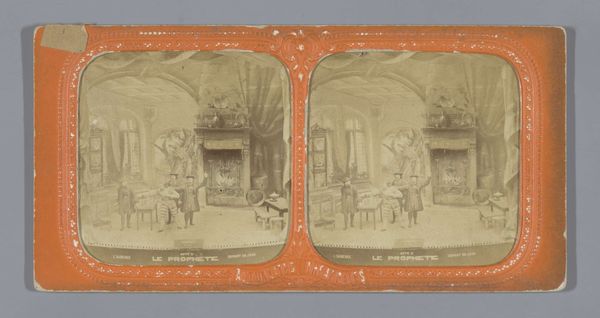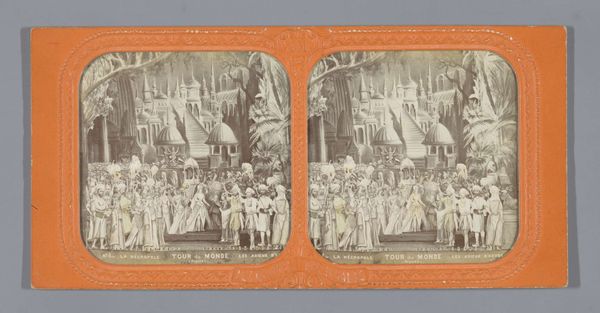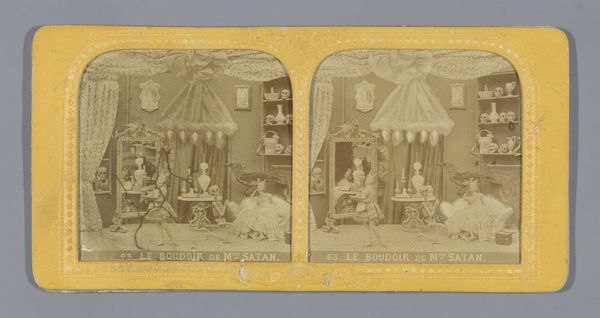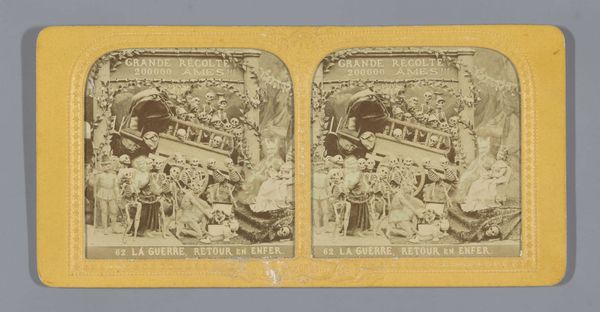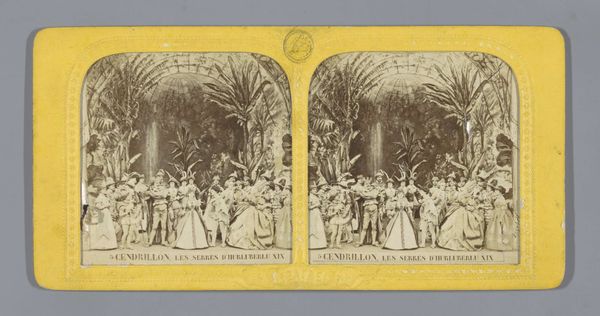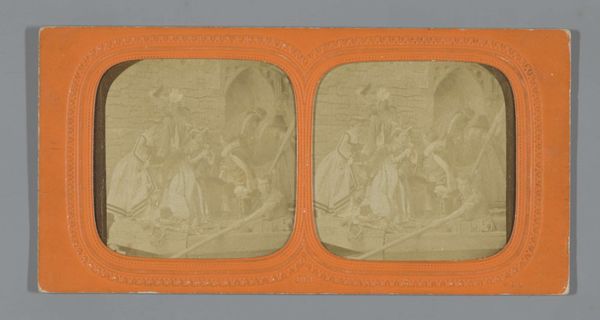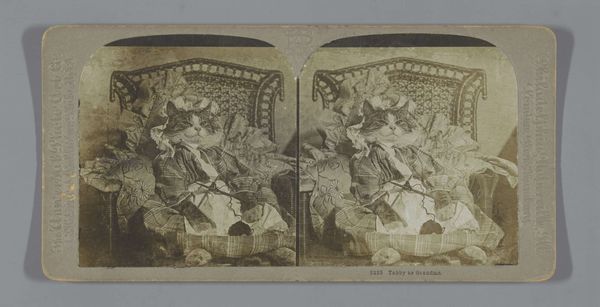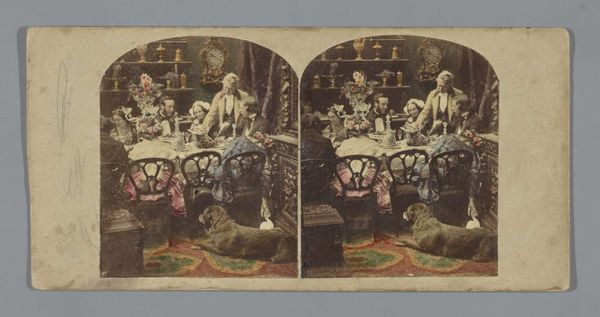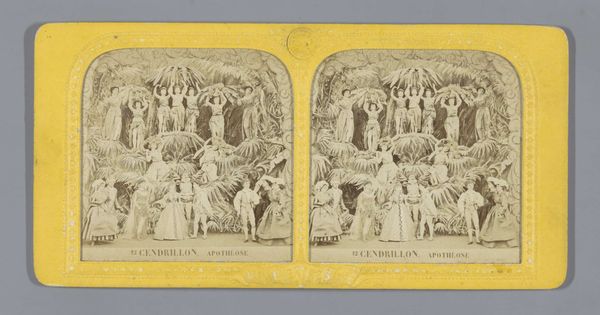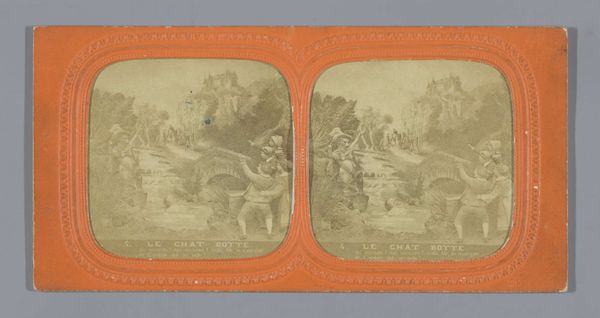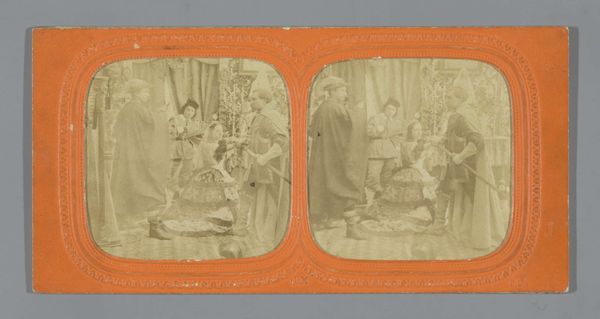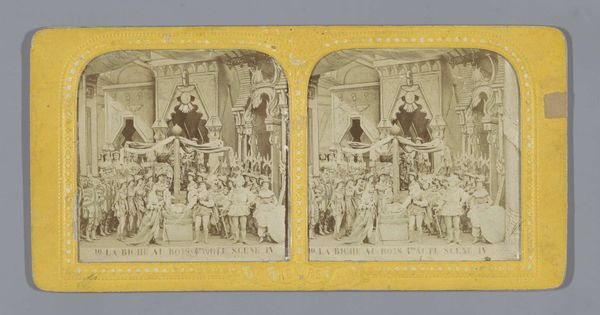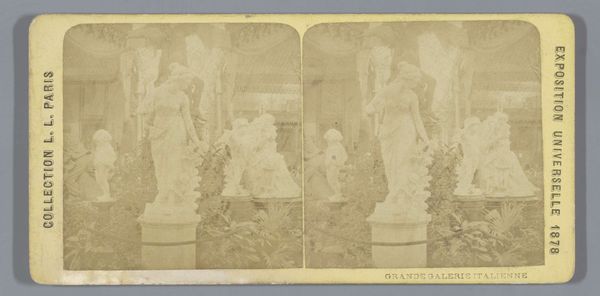
daguerreotype, photography
#
daguerreotype
#
photography
#
orientalism
#
history-painting
Dimensions: height 88 mm, width 177 mm
Copyright: Rijks Museum: Open Domain
Curator: This striking stereoscopic photograph is titled "Binnenkomst van Orpheus in de hel," or "Entrance of Orpheus to Hell" and was created sometime between 1868 and 1873. Editor: It's… unsettling. There's this immediate sense of theatricality, a staged drama that both attracts and repels. The lighting is harsh, highlighting the figures in a very dramatic way, contributing to this eerie vibe. Curator: Indeed, the "Diableries" series, of which this image is part, reflects a popular fascination with the occult and moral anxieties prevalent in the late 19th century. The artist utilizes the relatively new medium of photography and this stereoscopic format for, well, the creation of politically charged satirical tableau vivant scenes. This work currently resides in the Rijksmuseum collection. Editor: I notice how the female dancers, their youth, their costumes, become implicated in a darker, more exploitative narrative when placed against the image's background and mythological characters. It hints at themes of innocence corrupted, perhaps reflecting social anxieties surrounding morality and representation in that era. What political issues do you detect at work here? Curator: "Diableries" photographs often targeted figures of authority like politicians, members of the clergy, and of course, members of the aristocracy and imperialist elite. Given the orientalist style infused here, these scenes frequently caricatured them by aligning them with figures representing vice and wickedness, questioning their morality. We see this as social commentary embedded within this medium and its distribution. Editor: Given its inherent critique and commentary, what are your views on how it operated in public life and the world of images? Curator: Because of how widely images were consumed back then and the level of spectacle produced, I believe it played a key role in democratizing narratives while being shaped by larger social narratives of power and access to technologies of production. As it still does today, that public role of art and the politics of imagery would definitely play an important role. Editor: Absolutely, considering this piece makes us ponder what performative justice or resistance even look like through art made for, and within, structures that profit from them. Curator: Agreed, a lot to reflect on from what seems like an otherworldly piece of history. Editor: I leave seeing power differently, yes.
Comments
No comments
Be the first to comment and join the conversation on the ultimate creative platform.
